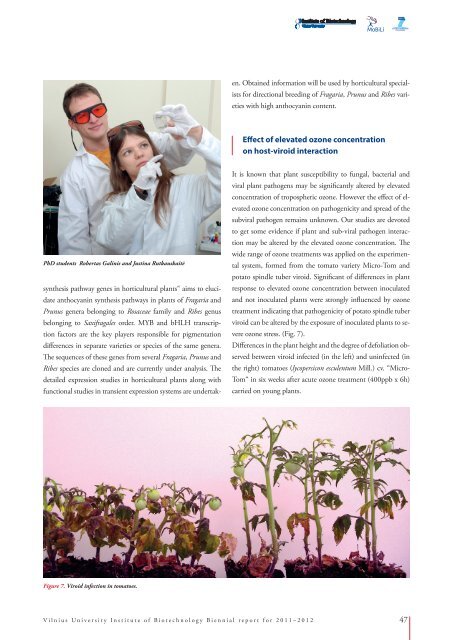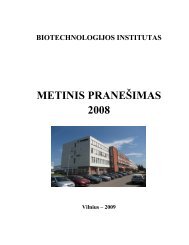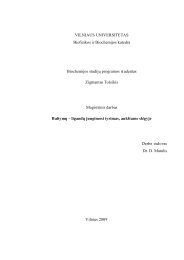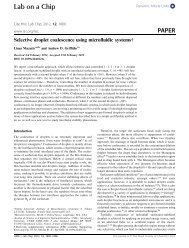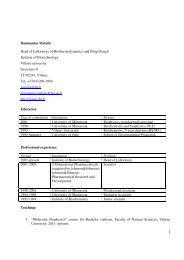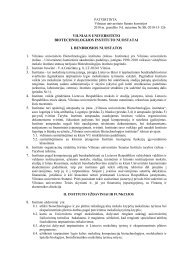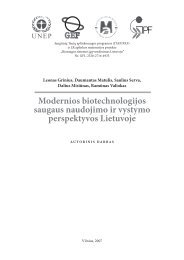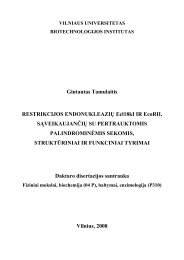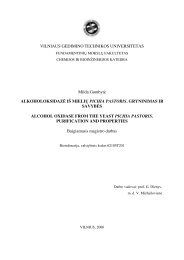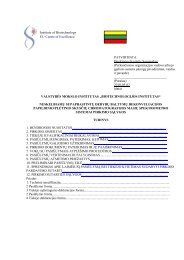Biennial Report 2011â2012
Biennial Report 2011â2012
Biennial Report 2011â2012
You also want an ePaper? Increase the reach of your titles
YUMPU automatically turns print PDFs into web optimized ePapers that Google loves.
PhD students Robertas Galinis and Justina Rutkauskaitė<br />
synthesis pathway genes in horticultural plants“ aims to elucidate<br />
anthocyanin synthesis pathways in plants of Fragaria and<br />
Prunus genera belonging to Rosaceae family and Ribes genus<br />
belonging to Saxifragales order. MYB and bHLH transcription<br />
factors are the key players responsible for pigmentation<br />
differences in separate varieties or species of the same genera.<br />
The sequences of these genes from several Fragaria, Prunus and<br />
Ribes species are cloned and are currently under analysis. The<br />
detailed expression studies in horticultural plants along with<br />
functional studies in transient expression systems are undertaken.<br />
Obtained information will be used by horticultural specialists<br />
for directional breeding of Fragaria, Prunus and Ribes varieties<br />
with high anthocyanin content.<br />
Effect of elevated ozone concentration<br />
on host-viroid interaction<br />
It is known that plant susceptibility to fungal, bacterial and<br />
viral plant pathogens may be significantly altered by elevated<br />
concentration of tropospheric ozone. However the effect of elevated<br />
ozone concentration on pathogenicity and spread of the<br />
subviral pathogen remains unknown. Our studies are devoted<br />
to get some evidence if plant and sub-viral pathogen interaction<br />
may be altered by the elevated ozone concentration. The<br />
wide range of ozone treatments was applied on the experimental<br />
system, formed from the tomato variety Micro-Tom and<br />
potato spindle tuber viroid. Significant of differences in plant<br />
response to elevated ozone concentration between inoculated<br />
and not inoculated plants were strongly influenced by ozone<br />
treatment indicating that pathogenicity of potato spindle tuber<br />
viroid can be altered by the exposure of inoculated plants to severe<br />
ozone stress. (Fig. 7).<br />
Differences in the plant height and the degree of defoliation observed<br />
between viroid infected (in the left) and uninfected (in<br />
the right) tomatoes (lycopersicon esculentum Mill.) cv. “Micro-<br />
Tom“ in six weeks after acute ozone treatment (400ppb x 6h)<br />
carried on young plants.<br />
Figure 7. Viroid infection in tomatoes.<br />
Vilnius University Institute of Biotechnology <strong>Biennial</strong> report for 2011–2012 47


